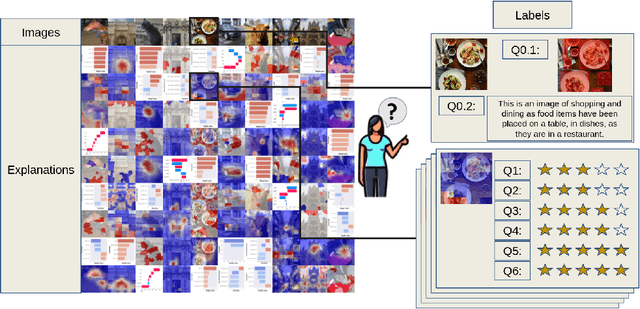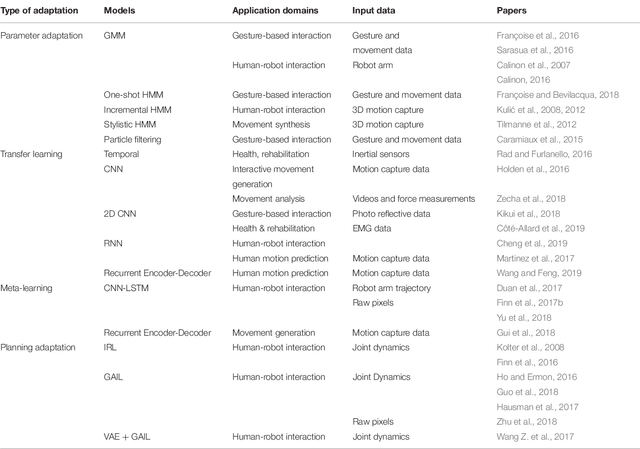Baptiste Caramiaux
LRI, EX-SITU
Benchmarking XAI Explanations with Human-Aligned Evaluations
Nov 04, 2024



Abstract:In this paper, we introduce PASTA (Perceptual Assessment System for explanaTion of Artificial intelligence), a novel framework for a human-centric evaluation of XAI techniques in computer vision. Our first key contribution is a human evaluation of XAI explanations on four diverse datasets (COCO, Pascal Parts, Cats Dogs Cars, and MonumAI) which constitutes the first large-scale benchmark dataset for XAI, with annotations at both the image and concept levels. This dataset allows for robust evaluation and comparison across various XAI methods. Our second major contribution is a data-based metric for assessing the interpretability of explanations. It mimics human preferences, based on a database of human evaluations of explanations in the PASTA-dataset. With its dataset and metric, the PASTA framework provides consistent and reliable comparisons between XAI techniques, in a way that is scalable but still aligned with human evaluations. Additionally, our benchmark allows for comparisons between explanations across different modalities, an aspect previously unaddressed. Our findings indicate that humans tend to prefer saliency maps over other explanation types. Moreover, we provide evidence that human assessments show a low correlation with existing XAI metrics that are numerically simulated by probing the model.
Machine Learning Approaches For Motor Learning: A Short Review
Feb 11, 2020
Abstract:The use of machine learning to model motor learning mechanisms is still limited, while it could help to design novel interactive systems for movement learning or rehabilitation. This approach requires to account for the motor variability induced by motor learning mechanisms. This represents specific challenges concerning fast adaptability of the computational models, from small variations to more drastic changes, including new movement classes. We propose a short review on machine learning based movement models and their existing adaptation mechanisms. We discuss the current challenges for applying these models in motor learning support systems, delineating promising research directions at the intersection of machine learning and motor learning.
Designing Deep Reinforcement Learning for Human Parameter Exploration
Jul 01, 2019



Abstract:Software tools for generating digital sound often present users with high-dimensional, parametric interfaces, that may not facilitate exploration of diverse sound designs. In this paper, we propose to investigate artificial agents using deep reinforcement learning to explore parameter spaces in partnership with users for sound design. We describe a series of user-centred studies to probe the creative benefits of these agents and adapting their design to exploration. Preliminary studies observing users' exploration strategies with parametric interfaces and testing different agent exploration behaviours led to the design of a fully-functioning prototype, called Co-Explorer, that we evaluated in a workshop with professional sound designers. We found that the Co-Explorer enables a novel creative workflow centred on human-machine partnership, which has been positively received by practitioners. We also highlight varied user exploration behaviors throughout partnering with our system. Finally, we frame design guidelines for enabling such co-exploration workflow in creative digital applications.
AI in the media and creative industries
May 10, 2019Abstract:Thanks to the Big Data revolution and increasing computing capacities, Artificial Intelligence (AI) has made an impressive revival over the past few years and is now omnipresent in both research and industry. The creative sectors have always been early adopters of AI technologies and this continues to be the case. As a matter of fact, recent technological developments keep pushing the boundaries of intelligent systems in creative applications: the critically acclaimed movie "Sunspring", released in 2016, was entirely written by AI technology, and the first-ever Music Album, called "Hello World", produced using AI has been released this year. Simultaneously, the exploratory nature of the creative process is raising important technical challenges for AI such as the ability for AI-powered techniques to be accurate under limited data resources, as opposed to the conventional "Big Data" approach, or the ability to process, analyse and match data from multiple modalities (text, sound, images, etc.) at the same time. The purpose of this white paper is to understand future technological advances in AI and their growing impact on creative industries. This paper addresses the following questions: Where does AI operate in creative Industries? What is its operative role? How will AI transform creative industries in the next ten years? This white paper aims to provide a realistic perspective of the scope of AI actions in creative industries, proposes a vision of how this technology could contribute to research and development works in such context, and identifies research and development challenges.
The Machine Learning Algorithm as Creative Musical Tool
Nov 01, 2016



Abstract:Machine learning is the capacity of a computational system to learn structures from datasets in order to make predictions on newly seen data. Such an approach offers a significant advantage in music scenarios in which musicians can teach the system to learn an idiosyncratic style, or can break the rules to explore the system's capacity in unexpected ways. In this chapter we draw on music, machine learning, and human-computer interaction to elucidate an understanding of machine learning algorithms as creative tools for music and the sonic arts. We motivate a new understanding of learning algorithms as human-computer interfaces. We show that, like other interfaces, learning algorithms can be characterised by the ways their affordances intersect with goals of human users. We also argue that the nature of interaction between users and algorithms impacts the usability and usefulness of those algorithms in profound ways. This human-centred view of machine learning motivates our concluding discussion of what it means to employ machine learning as a creative tool.
 Add to Chrome
Add to Chrome Add to Firefox
Add to Firefox Add to Edge
Add to Edge